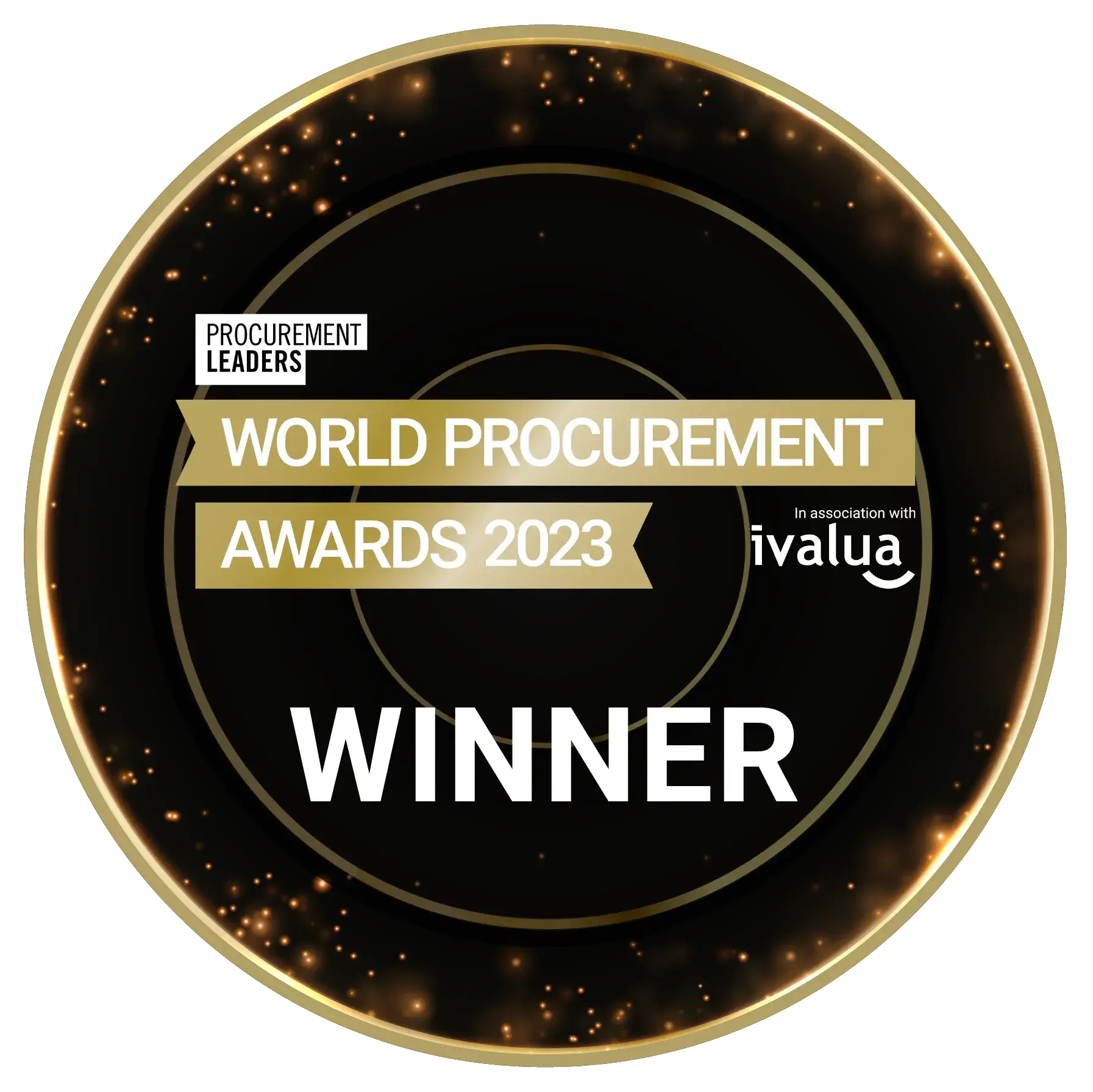A Request for Proposal (RFP) is a structured way for businesses to invite vendors to solve a specific business challenge or deliver a defined service.
Done right, RFPs offer a framework for fair and transparent decision-making. But here’s the catch: your request quality directly impacts the quality of the results.
Whether learning the ropes or looking to raise the bar, this 8-step guide delivers a repeatable method built for consistent success in the procurement process.
How long do RFPs take?
The short answer: It depends. But the full cycle, from planning to signed contract, typically takes 4 to 8 weeks.
Many delays aren't technical; they're organizational. Manual drafting, scattered feedback, and unclear goals can stall progress. Many businesses complete RFPs in under a month by front-loading alignment and using digital tools.
The elapsed time depends on: the complexity of the project, the size of the team, the number of potential suppliers, the number of RFP rounds, the amount of information required, and the need for contract negotiation.
The 8-Step RFP Process
The following steps serve as a checklist for completing RFP in about 4 weeks.
 Graph: The 4-week RFP - how to complete an RFP process in 20 business days
Graph: The 4-week RFP - how to complete an RFP process in 20 business days
1. Identify Sourcing Potential with Spend Analysis
Start with the data. Use spend analysis to uncover categories or projects where issuing an RFP can improve cost efficiency, supplier innovation, or compliance.
Talk to internal stakeholders, assess the current supplier landscape, and test the market with exploratory conversations. This ensures your bid is grounded in need and your team is aligned before soliciting bids.
Intro calls with potential suppliers can boost your understanding of the solution landscape and surface needs or features you hadn't considered.
2. Define the Scope and Specifications
Defining the scope of work upfront is non-negotiable. Without clarity here, the entire project can get bogged down.
Host a kickoff with key stakeholders to align on objectives, specifications, and evaluation criteria.
Your stakeholders most likely have valuable market intelligence and information on potential suppliers to be involved.
Confirm resourcing: secure time from subject matter experts (SMEs), decision-makers, and evaluators. This stage, often called front-end loading, sets the tone for the procurement process.
3. Prepare the RFP Document
Your RFP should be clear, compelling, and easy to respond to. Include:
-
A cover letter explaining the purpose of the RFP
-
Background on your organization and the business challenge
-
Clear scope of work and deliverables
-
Key dates and submission instructions
-
Structured templates for pricing and responses
Drawing on over 20 years of experience responding to RFPs, we’ve created three easy-to-use guides to support your process:
4. Manage the Bid Window Strategically
Set realistic deadlines. Most vendors can respond within two weeks if they know your business. When setting your timeline, factor in vendor familiarity, project scope, and required documentation.
If the timeframe is too tight, especially for larger RFPs, experienced vendors may opt to submit a no-bid response.
Awaiting the responses should not be time wasted. Use the open bid period to:
- Allow vendors to submit clarifying questions and respond to them promptly in a shared format
- Distribute any revised documents, timelines, or scope updates to all participants
- Coordinate internal team availability and align on who will review, score, and approve proposals
5. Evaluate Proposals and Select Suppliers
Predefine your evaluation criteria and scoring methodology before you issue the RFP. Digital tools can help automate initial scoring, but human review is still essential, especially for open-ended questions.
This phase can include more detailed supplier qualifications, such as reserving one day for site visits, presentations, financial audits, or product testing. You may want to consider setting up a POC project. Planning and preparing a POC that delivers good results would likely be outside the 4-week window.

6. Negotiate and Finalize the Contract
With your preferred suppliers shortlisted, move into negotiations. Start by addressing any outstanding clarification questions. You may request a Best and Final Offer (BAFO) from select candidates to refine pricing or terms.
For standardized products or services, consider an e-auction to increase price transparency. However, this format is typically unsuitable for complex or custom needs.
Contract negotiations often begin with your preferred supplier and may involve reviewing and redlining service level agreements (SLAs). Complex deals can take weeks to finalize, especially when specifications or responsibilities are unclear.
To stay on track:
-
Define your minimum-viable contract in advance
-
Align internally on objectives, roles, and deal-breakers
-
Reserve legal and SME resources for timely input
Strong prep and steady communication are your shortcuts to smoother, faster negotiations. Share the most up-to-date documents and data across teams. Flag any risks, and get ahead of miscommunications. Compare standard SLAs up front so there are no surprises.
7. Implementation and Handover
Communicate the award first to internal stakeholders, then to the winning candidate, and then to other suppliers. Explain the scope, contract terms, SLA, and KPIs to relevant stakeholders and end-users.
Clarify ongoing governance: who manages the relationship, tracks KPIs, and handles escalation?
Ensure the supplier is activated in the relevant systems. Agree on future procurement involvement and practices related to validating prices along the contract period.
Learn the best practices for a successful contract handover.
8. Reflect, Learn, and Improve
Post-project reviews are where great procurement teams level up. Debrief internally and offer constructive feedback to unsuccessful vendors.
Analyze lessons learned in each RFP process and collect feedback from internal stakeholders and candidates. Continuous improvement of the RFP process and alignment of interests will ensure that your stakeholders are eager to support sourcing projects in the future.
It is good practice to provide feedback to unselected candidates on why they were unsuccessful and how they could potentially improve in the future.
Over time, this continuous improvement loop makes each RFP faster, clearer, and more strategic.
Final Thoughts: Be Transparent, Be Strategic
- Keep the number of candidates limited so that you can focus your efforts. Involve only such candidates that have a fair chance of winning. Consider your time investment in reviewing responses, questions, and comments. The number of candidates is the multiplier.
- Use pre-drafted RFP questions to assess functionality. Focus on the essentials.
- Provide pre-defined forms to complete and tables for pricing. This makes the evaluation of responses easier for you later on.
- If you wish to mitigate unwanted surprises, introduce your mandatory requirements, compliance forms, terms for non-disclosure, information security requirements, and code of conduct upfront.
- Request potential suppliers to submit their SLA for review. Depending on the service and established industry practice, the suppliers may prefer to use their SLA for all their clients (as in the case of SaaS). Reviewing different SLAs allows you to compare suppliers' service coverage.
- Never assume that suppliers are familiar with all your internal jargon. Introduce internal concepts and acronyms.
- Provide contact details for requesting additional information and a preferred date and time for doing so.
- Provide an RFP timeline for potential next steps, such as presentation or negotiation dates.
- Give clear instructions on how to submit the RFP response. Explain what documents you need from the candidates.
- Use electronic sourcing and e-signature tools. E-sourcing enables the smooth distribution of RFP materials, audit trail, and storing of responses. E-signing helps you mitigate delays in signing and secures document version control.
Header picture by: Joe Hu (Unsplash)

 Graph: The 4-week RFP - how to complete an RFP process in 20 business days
Graph: The 4-week RFP - how to complete an RFP process in 20 business days


